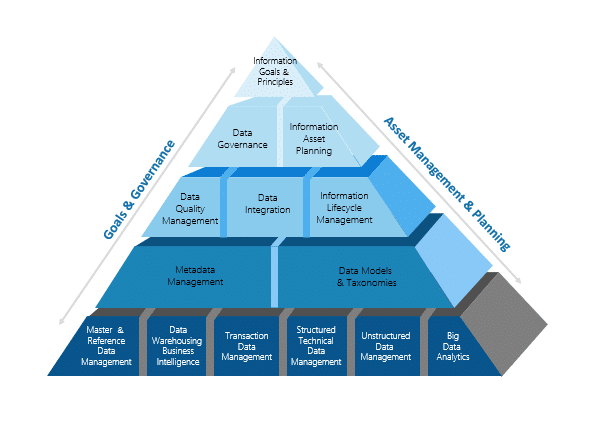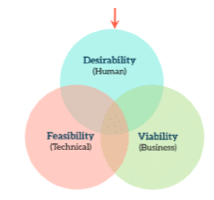Too often in the hype and excitement around Big Data, the conversation gets complicated very quickly.
Data scientists and technical experts bandy around terms like Hadoop, Pig, Mahout, and Sqoop, making us wonder if we’re talking about information architecture or a Dr. Seuss book. Business executives who want to leverage the value of Big Data analytics in their organisation can get lost amidst this highly-technical and rapidly-emerging ecosystem. In an effort to simplify Big Data, many experts have referenced the “3 V’s”: Volume, Velocity, and Variety. In other words, is information being generated at a high volume (e.g. terabytes per day), with a rapid rate of change, encompassing a broad range of sources including both structured and unstructured data?
If the answer is yes then it falls into the Big Data category along with sensor data from the “internet of things”, log files, and social media streams. The ability to understand and manage these sources, and then integrate them into the larger Business Intelligence ecosystem can provide previously unknown insights from data and this understanding leads to the “4th V” of Big Data – Value.
There is a vast opportunity offered by Big Data technologies to discover new insights that drive significant business value. Industries are seeing data as a market differentiator and have started reinventing themselves as “data companies”, as they realise that information has become their biggest asset. This trend is prevalent in industries such as telecommunications, internet search firms, marketing firms, etc. who see their data as a key driver for monetisation and growth. Insights such as footfall traffic patterns from mobile devices have been used to assist city planners in designing more efficient traffic flows. Customer sentiment analysis through social media and call logs have given new insights into customer satisfaction. Network performance patterns have been analysed to discover new ways to drive efficiencies. Customer usage patterns based on web click-stream data have driven innovation for new products and services to increase revenue. The list goes on.
Key to success in any Big Data analytics initiative is to first identify the business needs and opportunities, and then select the proper fit-for-purpose platform. With the array of new Big Data technologies emerging at a rapid pace, many technologists are eager to be the first to test the latest Dr. Seuss-termed platform. But each technology has a unique specialisation, and might not be aligned to the business priorities. In fact, some identified use cases from the business might be best suited by existing technologies such as a data warehouse while others require a combination of existing technologies and new Big Data systems.
With this integration of disparate data systems comes the 5th V – Veracity, i.e. the correctness and accuracy of information. Behind any information management practice lies the core doctrines of Data Quality, Data Governance, and Metadata Management, along with considerations for Privacy and Legal concerns. Big Data needs to be integrated into the entire information landscape, not seen as a stand-alone effort or a stealth project done by a handful of Big Data experts.

Figure 1. Enterprise Architects Information Management Framework
In the excitement and hype around Big Data analytics, it’s easy to see this emerging technology as a “silver bullet” that can magically generate new insights solely through powerful technology and smart data scientists. As in any age of change, however, core principles still apply, and in order to gain insights from Big Data, you need to make sure your “little data” is correct. Many of the “golden nuggets” of discovery are obtained through an intersection of Big Data analytics with traditional sources such as a data warehouses or master data management hubs.

Figure 2. The intersection of Big Data analytics with traditional sources such as a data warehouse
Customer sentiment analysis is a common use-case for Big Data analytics—i.e. what are our customers saying about our products in social media and/or call log records? And how can we leverage this information to improve our business? Unless you have a robust ‘single source of record’ for customer information, new discoveries from Big Data analytics will be of little use. Was it Jane R. Doe or Jane P. Doe complaining about the new luxury sedan model? With data properly managed within an information management framework, the full value of Big Data becomes apparent and “golden nuggets” of information can appear. For example, not only did Jane R. Doe complain about the new luxury sedan, but she had five service calls about her transmission. She has purchased five high-priced sedans from us in the past ten years and has an income of over $750,000. Jane R. Doe recently followed our competitor on Twitter and has asked several questions about new features. It might be worth having a representative call her personally.
Big Data analytics is an exciting development in the field of information management and, if used properly, can generate a wealth of opportunity. In order to discover the “golden nuggets” in your organisation, remember these guiding principles:
- Start with your business goals and drivers and align them to fit-for-purpose technologies (not the other way around)
- Integrate your Big Data initiatives with core information management practices
- Build your information management practice on a core framework that includes data governance, data quality management, data quality, and the other principles that create a trusted source of information
Lastly, have fun—this is an exciting time to be in information management. New technologies are emerging almost daily that can add significant value to your organisation, particularly in the Big Data space. As Dr. Seuss would say:
The more that you learn, the more places you’ll go — Dr. Seuss



 3 day course
3 day course